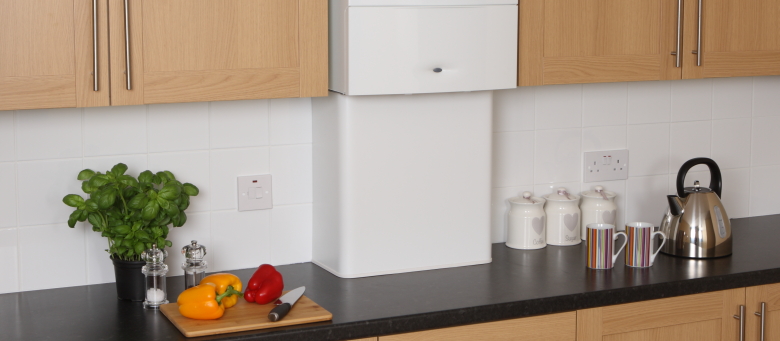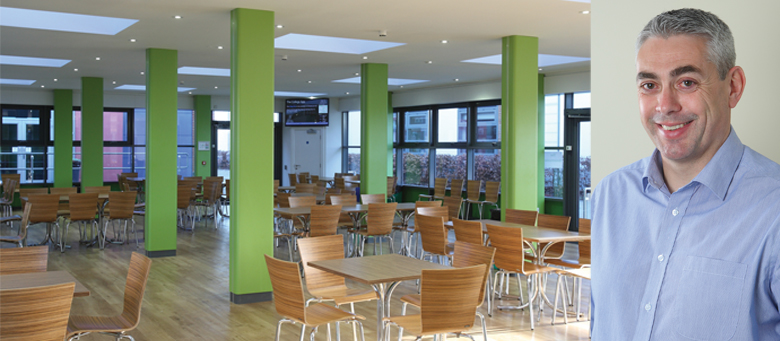If it wasn’t for column casings and interior wall lining solutions, building interiors would be considerably less attractive environments, which is as true for academies, schools and universities, as it is for the commercial or retail sectors.
Yet, as they are usually designed to integrate as part of the fabric of an educational building, their importance can often be overlooked or taken for granted by the building’s occupants.
Very few people stand back to admire a laminated plywood column casing at a school or brushed stainless steel wall cladding in a new university, yet they are key elements in interior design and integral to the aesthetics of the learning environment.
For column casings, at least, their role has been transformed from being a purely functional device for concealing structural steelwork to one of visual and decorative importance. While initially used by a relatively small number of architects in the mid 1980s, column casings are now commonplace, with their aesthetic values and appeal being a key consideration alongside size and material during the specification process.
The demand for wider choice and increased aesthetics from architects, educational design teams and specifiers have been key influences on Peterborough based casing and interior cladding company, Encasement, whose range has continually expanded and diversified during the past ten years to become the most comprehensive available in the UK.
Alongside the company’s six individual ranges of column casings, its ‘Vecta’ system provides a high quality solution for interior wall linings, bulkheads and reveals. Launched just a few years ago, the system has been used in a diverse range of key retail and commercial projects with Tesco and Prêt a Manger, as well as its extensive use for a new extension at South Bank University, London.
While Vecta has already gathered significant momentum, it is for column casings that Encasement is perhaps best known. The company’s extensive range not only includes pre-formed plywood and glass reinforced gypsum (GRG), as well as a specialised fire resistant solution for use with mezzanine floors, but also aluminium, stainless steel and glass reinforced polymer (GRP) casings for use on exterior applications due to their inherent weather resistance.
Interestingly, Encasement’s ‘Forma’ metal casings and ‘Polyma’ GRP range are also widely used in educational building interiors, where the wide selection of finishes coupled with their durability, make them an ideal solution. In particular, the Forma range provides specifiers with an even greater scope of options and can be specified with diameters from 250mm up to 1000mm or as square, rectangular or even hexagonal forms.
Recent projects, such as Winchester College, Birmingham University Dental School, University College London, Farnborough Sixth Form College, Shenley School and Liverpool University’s Donnan Laboratories have all exploited the practical and decorative properties of Encasement’s ‘Forma’ metal casings, as well as its ‘Circa’ and ‘Quadra’ products manufacturer from pre-formed plywood.
Alongside Forma, the Circa’ and Quadra ranges were the first to be launched by the company and are still arguably the most popular, as they provide specifiers and contractors with an unrivalled selection of finishes, which includes plain, laminated or real wood veneers.
In addition, as Encasement is the UK’s only supplier and manufacturer of pre-formed plywood pipe boxing and decorative casing products that holds an FSC® ‘Chain of Custody Certification’ from the Forest Stewardship Council, both Circa and Quadra are manufactured from FSC® certified plywood. This makes them compliant with sustainability codes and environmental procurement policies, which is key consideration on educational building projects.
Designed solely for interior decorative applications, Circa and Quadra casings are used in an extremely diverse range of projects beyond the education sector, which underlines their versatility, ease of specification and the immense range of decorative finishes available to complement or contrast with a building’s interior design scheme.
While Circa and Quadra are available from Encasement as a plain casings for on site painting and decoration, by far the most popular casings are those finished with decorative laminates, which not only resist damage, scuffs and scratches, but also provides the specifier with a diverse palette of finishes from plain colours, wood grain and metallic, as well as textured and real wood veneers, to name but a few.
The choice of sizes available is also wide, allowing specifiers to choose not only circular and square shapes, but also extended circles and rectangular profiles, which use additional infill panels to give greater design flexibility while ensuring they are still easy to install.
Encasement’s Managing Director, Martin Taylor, commented: “Column casing provide a perfect mix of practicality and aesthetics, which are essential considerations for all educational buildings, whether they’re schools, colleges or universities. We’ve taken a lot of care to ensure our range meets both of these key criteria while ensuring that we always remain competitive and deliver high quality products, which are probably key factors behind why we have undertaken so many projects in this sector.”
“The Vecta interior cladding system enhances our educational building interiors offer and allows specifiers to source a range of specialised interior finish products from a single company with high levels of expertise and experience in this sector. We also have our own contracting arm, which enables us to offer a full supply and install service to support contractors.”
Encasement’s latest ‘column casing solutions’ e-brochure is available for download from the company’s website and covers every product in the range as well as providing details on materials, sizes and finishes available alongside an extensive technical information section.
Further information is also available from their website at www.encasement.co.uk or by calling 01733 266889.















Leave a Reply
Want to join the discussion?Feel free to contribute!